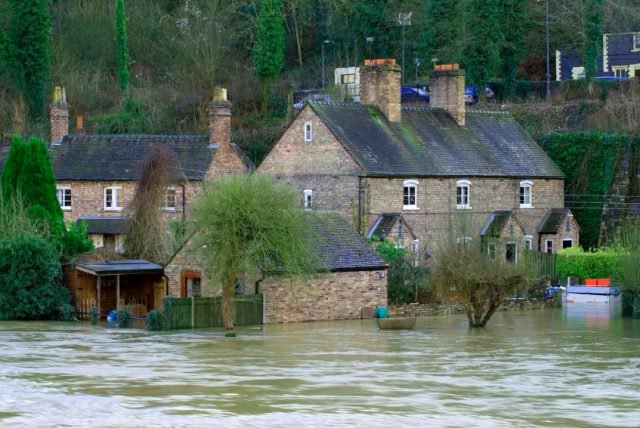Home » Uncategorised »
‘New approach’ to construction on floodplains needed
This article is an external press release originally published on the Landlord News website, which has now been migrated to the Just Landlords blog.
With the UK being battered by storm Imogen and with the bad weather showing no signs of abating, a land agent has called for a different approach to construction of homes.
Aston Mead believes that a change in approach is required if Britain is to continue to construct properties on flood plains.
Flooding
Almost 10,000 homes a year are built on floodplains in the UK, with an average of one in fourteen homes constructed on land with a significant threat of flooding.
‘This country needs to get rid of its sandbag mentality and start building homes which have flood prevention at the core of their construction,’ said Aston Mead Director Richard Watkins. ‘We can’t go on treating flooding as an afterthought. Instead, we should be building properties which are specifically designed to rise and fall with the flood water. The technology is already available out there; all we have to do is make best use of it.’[1]
Watkins believes that homes that are built on top of a pre-cast pontoon, which sits inside an excavated concrete void, are the way forwards. These would be appropriate as when flood water enters the void, the pontoon rises, assisted by vertical rails which can be obscured within walls or chimney breasts.
When flood water levels drop, the house goes back to its original position, with a pump to get rid of any excess water. Access will be available at all times, using an articulated pathway, with services remaining connected through a number of flexible knuckle joints.
‘Completely Scalable’
Mr Watkins feels, ‘this system is completely scalable and designs of properties can range from the very traditional to the highly contemporary, with the footprint of the floating pontoon extending beyond the building itself to include garages, terraces and gardens. The pontoons can also be used as fully habitable basements and there are few limitations to size, design or even the number of storeys that can be added on top. An additional advantage is that as water fills the void, it reduces the amount of flood water passing onto neighbouring properties.’[1]

‘New approach’ to construction on floodplains needed
‘These buildings can be mortgaged on standard terms by most high-street lenders and they also qualify for standard household insurance-despite being on the floodplain. What’s more, if they are also fitted with grey water recycling and photo-voltaic panels, they can remain fully functional safe havens-even in the worst flooding conditions,’ he added.[1]
Record
The most recent Met Office figures suggest that December 2015 was the wettest month ever recorded in the UK, with almost twice the amount of the typical expected rainfall.
As a result, Watkins notes that, ‘resorting to a supply of sandbags in the garage just in case is no longer good enough. We can’t continue fighting floods forever. Rain will always fall and water will always rise. And with annual rainfall set to continue to rise, even areas not currently at risk may become vulnerable to flooding in the future.’[1]
‘These new construction methods mean that we can help develop floodplain sites, in the certain knowledge that future owners won’t experience the sort of devastation from flooding that we’ve already seen across the country this Winter,’ he concluded.[1]
[1] http://www.propertyreporter.co.uk/property/building-homes-which-rise-with-flood-water.html




